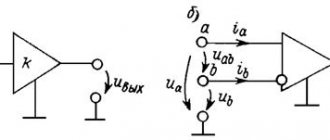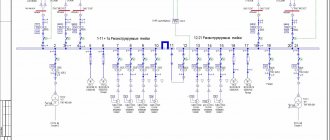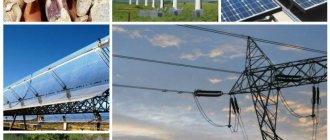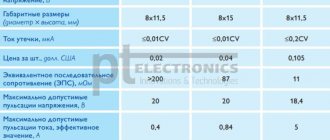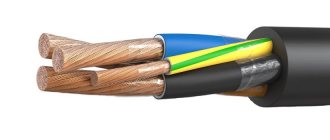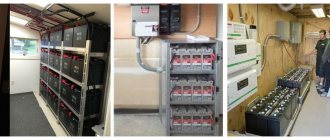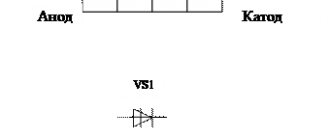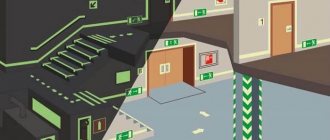There is a PUE (rules for electrical installations), where you can determine the classification of electrical consumers and get acquainted with their conditional division by reliability. If we consider a multi-storey building and a hospital, then the reliability of the second should be higher. Since intensive care units and operating rooms are connected to the power supply here, therefore, an emergency shutdown can lead to the loss of human life or its threat.
If we consider a chemical plant, then a power outage will lead to an explosion, casualties and material damage, hence this facility is important and requires a reliable power supply.
All objects are carefully studied and they are assigned reliability categories.
What categories are distinguished:
- First. This group is also called very important. Since here the lack of power leads to irreversible processes, and, most importantly, creates a danger to human life, the state, and an emergency situation can be created that will result in great material damage. Therefore, uninterruptible power supply from two independent sources is included here, when automatic switching from one bus to another is carried out in a matter of seconds. Also in the first group, in order to increase reliability, a third source is provided, for example, batteries, autonomous mini-power plants, etc. This source is intended for a special group. They can also power a second energy carrier.
- Second . An emergency power outage can lead to mass defects, disruption of technical processes, and disruption of human life. Here, too, two independent and interchangeable sources are used. This group is used by a significant number of electricity consumers.
- Third . Those consumers who do not fall into the first two categories belong to group 3. Here, one source of power supply is used, the only obligatory condition is that the power supply should be stopped for no more than one day. The source can be one transformer package substation and 72 hours of outages are allowed in one year.
The more important the category, the higher its cost, since it leads to the installation of additional equipment, hence the overall power consumption system will be quite complex.
Requirements for power supply sources
Electrical receivers of each category, according to the installation rules, have certain requirements.
- In group 1 of electrical receivers, power must be connected from independent power supplies. And if we are talking about a special group of receivers, then a third independent mutually redundant electrical unit is additionally provided. This ensures uninterrupted and reliable electrical power. Since power failures can lead to human casualties, material damage, disruption of technical processes, failure of television, etc.
- In the second group of power receivers, there is also provision from two independent sources. The only difference is that here a certain amount of time is allowed to connect the backup source, whereas in the first category the switching is carried out automatically. Backup power can be connected by an on-site operational team or by on-duty personnel. A power outage in this group can lead to downtime of workers and electrical equipment, and a stop in production.
- In power receivers of the third group, power is supplied from one source and the power break cannot be more than 24 hours.
Voltage levels and regulation, reactive power compensation
1.2.22. For electrical networks, technical measures should be provided to ensure the quality of electrical energy in accordance with the requirements of GOST 13109.
1.2.23. Voltage regulation devices must ensure that the voltage on buses with a voltage of 3-20 kV of power plants and substations to which distribution networks are connected is maintained within a range of not less than 105% of the rated value during the period of highest loads and not higher than 100% of the rated value during the period of least load of these networks. Deviations from the specified voltage levels must be justified.
1.2.24. The selection and placement of reactive power compensation devices in electrical networks are made based on the need to ensure the required network capacity in normal and post-emergency modes while maintaining the required voltage levels and stability margins.
With regard to ensuring the reliability of power supply, power receivers are divided into the following three categories: Power receivers of category I - power receivers whose power supply interruption may entail: danger to human life, significant damage to the national economy; damage to expensive capital equipment, mass defects of products, disruption of a complex technological process, disruption of the functioning of particularly important elements of public utilities. From category I electrical receivers, a special group of electrical receivers is distinguished, the uninterrupted operation of which is necessary for an accident-free shutdown of production in order to prevent a threat to human life, explosions, fires and damage to expensive capital equipment. Category II power consumers are power consumers whose power supply interruption leads to a massive shortage of products, massive downtime of workers, machinery and industrial transport, disruption of the normal activities of a significant number of urban and rural residents. Electrical receivers of category III - all other electrical consumers that do not fit the definitions of categories I and II. Category I power receivers must be provided with electricity from two independent, mutually redundant power sources, and an interruption in their power supply in the event of a power failure from one of the power sources can be allowed only for the duration of automatic power restoration. To supply power to a special group of category I electrical receivers, additional power must be provided from a third independent, mutually redundant power source. Local power plants, power plants of power systems (in particular, generator voltage buses), special uninterruptible power units, batteries, etc. can be used as a third independent power source for a special group of electrical receivers and as a second independent power source for the remaining electrical receivers of category I. If power supply redundancy cannot ensure the necessary continuity of the technological process or if power supply redundancy is not economically feasible, technological redundancy must be implemented, for example, by installing mutually redundant technological units, special devices for emergency shutdown of the technological process, operating in the event of a power supply failure. If feasibility studies are available, it is recommended that power supply to category I electrical receivers with a particularly complex continuous technological process requiring a long time to restore the operating mode be carried out from two independent mutually redundant power sources, which are subject to additional requirements determined by the features of the technological process. It is recommended to supply power receivers of category II with electricity from two independent, mutually redundant power sources. For category II electrical receivers, in the event of a power failure from one of the power sources, interruptions in power supply are allowed for the time required to turn on the backup power by the actions of the duty personnel or the mobile operational team. It is allowed to supply power to category II electrical receivers using one BJI, including those with a cable insert, if it is possible to carry out emergency repairs of this line in no more than 1 day. Cable inserts for this line must be made with two cables, each of which is selected according to the highest continuous current BJI. It is allowed to supply electrical receivers of category II via one cable line, consisting of at least two cables connected to one common device. If there is a centralized reserve of transformers and the possibility of replacing a damaged transformer in no more than 1 day, it is allowed to supply category II electrical receivers from one transformer. For category III electrical receivers, power supply can be provided from a single power source, provided that power supply interruptions necessary to repair or replace a damaged element of the power supply system do not exceed 1 day.
Chapter 1.2. Power supply and electrical networks (Agreed with the USSR State Construction Committee on August 3, 1976; approved by the Main Technical Directorate and State Energy Supervision of the USSR Ministry of Energy on July 5, 1977)
Categories of reliability of power supply of a building/facility
There is a table that displays the reliability category of residential buildings, dormitories, institutional buildings and facilities:
- A residential building with electric stoves is classified in group 2.
- A house with 8 apartments and electric stoves is group 3.
- Garden plots – 3.
- Room with fire-fighting equipment – 1.
- A dormitory where more than 50 people live – 2. Less than 50 – 3.
- Individual heating point and central heating point – 1.
- Buildings where more than 2 thousand people work – 1.
- High-rise buildings more than 16 floors – 1.
- Sanatorium buildings and rest houses – 1.
- Gosstrakh and financial institutions with security alarms and fire-fighting devices - 1.
- Libraries with security equipment – 1.
- Libraries where one thousand copies of books are stored – 2.
- Safety of book copies up to 100 units – 3.
- Preschool and school institutions with security equipment – 1.
- Hotels with security and fire safety equipment – 1.
- Canteens, cafes and other premises for eating - 1.
- Public service buildings (hair salons with more than 15 people, studios with 50 people and dry cleaners with a capacity of 500 kg) – 2.
- Museums of federal, regional and republican significance – 1.
- Medical buildings with intensive care, operating room, ward for premature babies - 1.
- Temporary objects – 3.
A building that has group 3 and is powered through one line should have security and fire equipment connected to autonomous sources.
Power electrical receivers and lighting are connected from transformers.
Transformer substations are used for public buildings, built-in or attached.
A residential building can be powered by attached substations only if they are filled with liquid dielectric.
The use of TP in residential buildings and school buildings is prohibited.
The TP should be placed in such a way that there is round-the-clock access for organizations and personnel involved in maintenance.
Residential building power supply rules
- Concluding an agreement with a local energy supply organization.
- Development of technical specifications.
- Drawing up a house electrification scheme with calculation of the power of the devices intended for use. This is necessary to determine the cable cross-section and calculate the optimal power reserve.
- Installation and sealing of the metering device, ASU.
- Cable installation.
- Equipment selection.
- Checking compliance and issuing an act of commissioning into the distribution zone.
- Receipt of the document: “Act of fulfillment of specifications” and an agreement for the provision of electricity.
We recommend reading: What payments for 3 children in 2021 in Udmurtia
Attention
- Electricity is supplied by two cables. If one transformer malfunctions, the ATS supplies the load to the house as a whole through a functional second cable. In the first category, backup sources are active: local power plants, battery batteries. Apartment buildings, public buildings with more than 2021 working people, hospitals, etc. are supplied in this way.
- Powering the living space with 2 cables, 2 transformers for insurance in case of failure. The power supply is interrupted only to connect full loads to the cable. In this way, houses with more than 5 floors and 8 apartments are supplied.
- The simplest category. Power is provided from the substation, there is only one electrical cable. Accidents are resolved within 24 hours. In this way, houses up to 5 floors, up to 9 apartments, and horticultural living quarters are supplied.
For your information
Schemes (description)
A prerequisite for receivers of the first group is independent power supplies. And in the event of a power failure, it is automatically restored from the backup power supply. Electricity from independent sources is supplied from various substations or from one. In this case, certain conditions must be met:
- Buses or sections are connected from independent sources;
- There should be no connection between busbars or sections. Shutdown occurs automatically in an emergency situation.
Batteries, uninterruptible power supply devices, and local power plants can serve as a backup power source.
Fig.1
Figure 1 shows the radial diagram of category 1 consumers. During an emergency power outage in one of the sections, the switch on the bus will automatically turn on.
With the second category of consumers, if the integrity of the electrical circuit is disrupted, there may be some delay in power supply until the backup electrical device turns on.
Fig. 2
The second diagram in Fig. 2 displays consumers of category 2. Can also be used for 1 group.
An emergency power outage in one of the sections will not prevent the continuation of operation of the second section.
Fig.3
Figure 3 shows a diagram of category 3 consumers. Using an emergency source, the circuit can be used for consumers of category 1.
School_power_supply_reliability_category
According to the PUE, all consumers of electrical energy are conventionally divided into three categories (groups), depending on their importance. In this case, we are talking about how reliable the consumer’s energy supply should be, taking into account all possible factors. We present the characteristics of each category of power supply to consumers and the corresponding requirements regarding the reliability of their power supply.
The first category of power supply includes the most important consumers, an interruption in the power supply of which can lead to accidents, major breakdowns, and large material damage due to the failure of entire complexes of equipment and interconnected systems. These consumers include:
mining, chemical industry and other hazardous industries;
important healthcare facilities (intensive care units, large dispensaries, maternity wards, etc.) and other government institutions;
boiler houses, pumping stations of the first category, a break in the power supply of which leads to the failure of city life support systems;
traction substations of urban electrified transport;
communication installations, control rooms of city systems, server rooms;
elevators, fire alarm devices, fire protection devices, security alarms for large buildings with a large number of people in them.
Consumers in this category must be powered from two independent power sources - two power lines fed from separate power transformers. The most dangerous consumers can have a third independent power source for greater reliability. A break in the power supply to consumers of the first category is permitted only for the duration of the automatic switching on of the backup power source.
Depending on the power of the consumer, an electrical network line, a battery or a diesel generator can act as a backup source of power supply.
The PUE defines an independent power source as a source on which the voltage is maintained in post-emergency mode within regulated limits when it disappears from another power source. Independent power sources include two sections or bus systems of one or two power plants or substations, subject to the simultaneous fulfillment of the following two conditions:
The second category of supply includes consumers, when their power is turned off, the operation of important city systems stops, mass defects of products occur in production, and there is a risk of failure of large interconnected systems and production cycles.
In addition to enterprises, the second category of electricity supply includes:
medical institutions and pharmacies;
city institutions, educational institutions, large shopping centers, sports facilities where there may be large crowds of people;
all boiler houses and pumping stations, except those that belong to the first category.
The second category of power supply provides for powering consumers from two independent sources. In this case, a break in the power supply is allowed for a period of time during which the electrical service personnel will arrive at the site and make the necessary operational switches.
The third category of electricity supply to consumers includes all remaining consumers who were not included in the first two categories. Usually these are small settlements, city institutions, systems, the interruption in the power supply of which does not entail consequences. This category also includes multi-apartment residential buildings, the private sector, country houses and garage cooperatives.
Consumers of the third category receive power from a single power source. An interruption in power supply to consumers in this category, as a rule, is no more than a day - for the duration of emergency restoration work.
When dividing consumers into categories, many factors are taken into account, possible risks are assessed, and the most reliable and optimal options are selected.
Maximum permissible number of outage hours per year and time frame for restoring power supply
Issues of power supply, including reliability of power supply, are determined in the consumer agreement with the power industry entity. The contract establishes the permissible number of outage hours per year and the time frame for restoring power supply (this is actually the permissible duration of a power outage according to the PUE).
For reliability categories I and II, the permissible number of outage hours per year and the timing of restoration of power supply are determined by the parties depending on the specific parameters of the power supply scheme, the availability of backup power sources and the characteristics of the consumer’s technological process, but cannot be more than the corresponding values provided for reliability category III, for which the permissible number of outage hours per year is 72 hours (but not more than 24 hours in a row, including the period of restoration of power supply).
What does dividing consumers into categories give?
Dividing consumers into categories first of all makes it possible to correctly design a particular section of the power grid and connect it to the unified power system. The main goal is to build the most efficient network, which, on the one hand, must fully meet the power supply needs of all consumers, meet the requirements for reliability of power supply, and on the other hand, be as simplified as possible in order to optimize funds for maintenance and repair of networks.
Who determines and how
The criteria for choosing categories in electricity supply are the number of people. We consider, first of all, their safety and the level of material damage if a power outage occurs. For such purposes, designers have developed a classifier of various types of power supply. It indicates the types of buildings and objects; you just need to select the desired building with a certain category.
In industrial buildings, to determine the required power supply group, technologists participate and use the document SP 31–110–2003 and PUE (electrical installation rules).
It all depends on the danger and possible property damage. The lower it is, therefore, the category will be lower and vice versa. For example, an object associated with a fire is always assigned the first category.
Sometimes the category of the building and the electrical supply do not match. This happens at heating points, and the technical specifications specify the permitted power individually for each power supply group.
